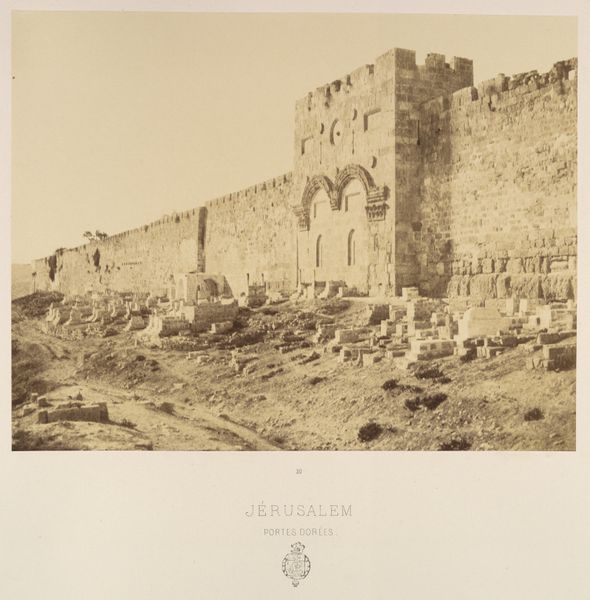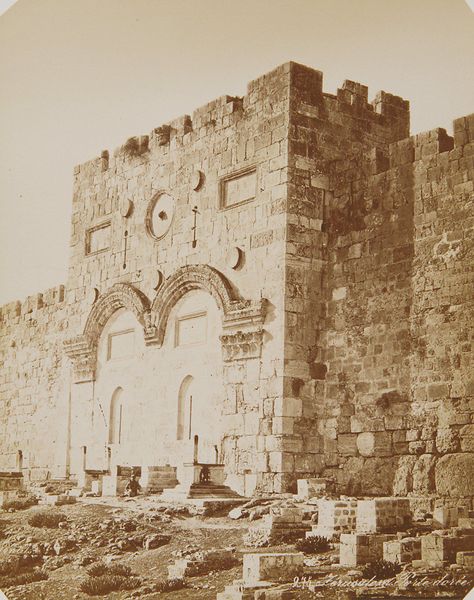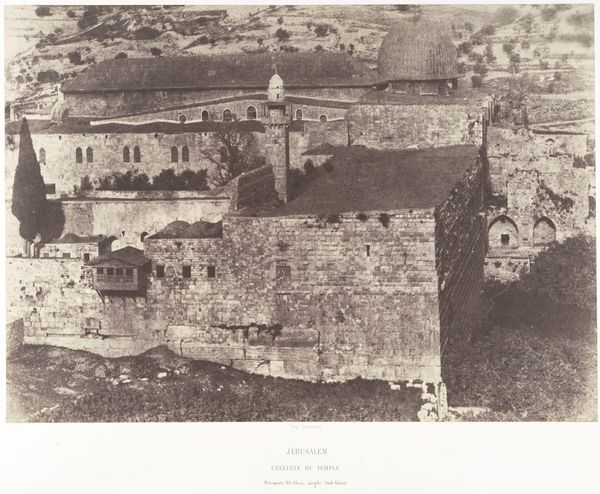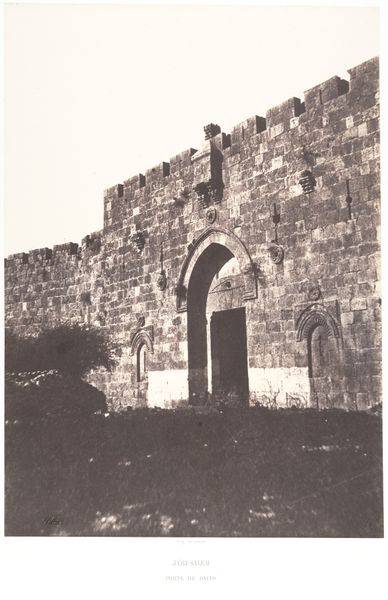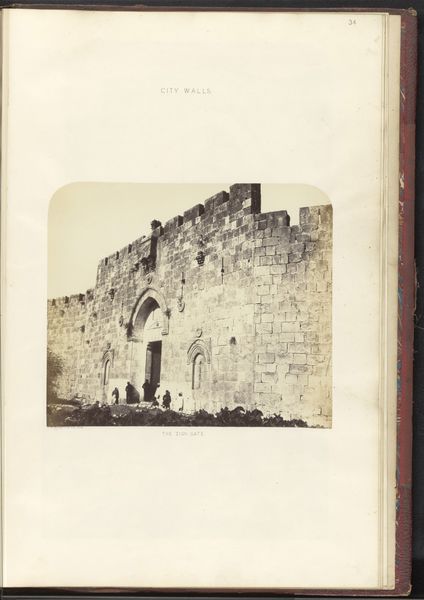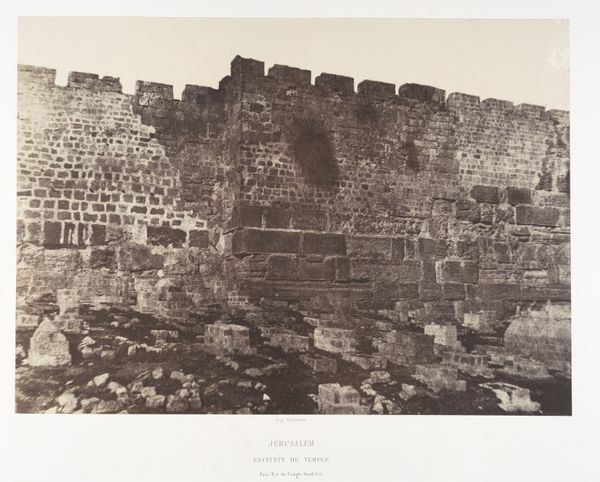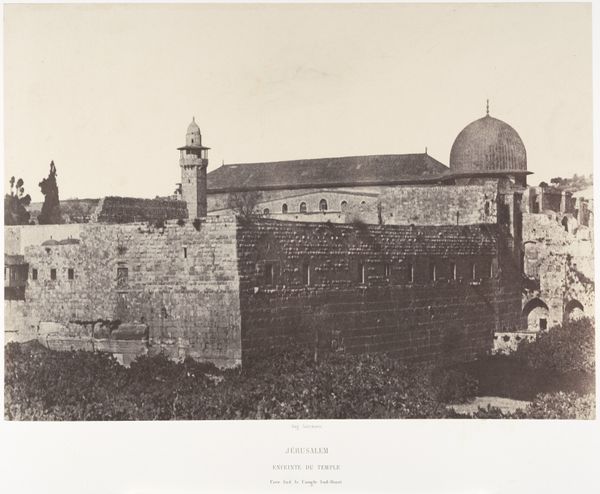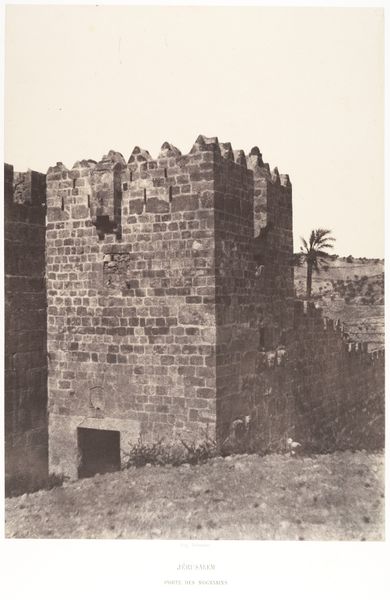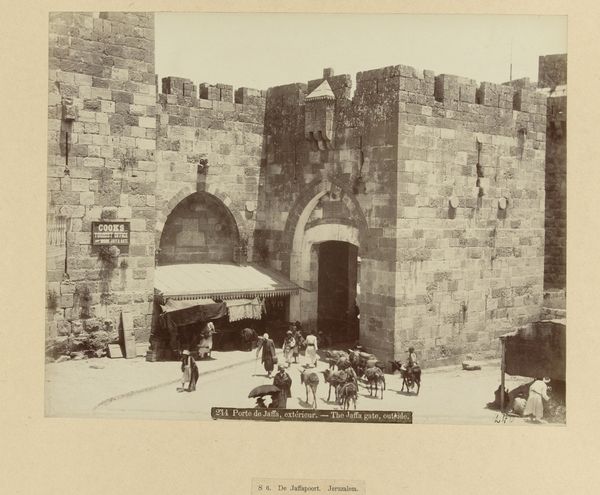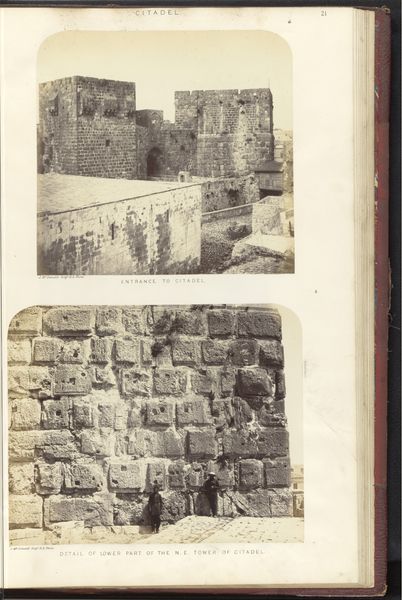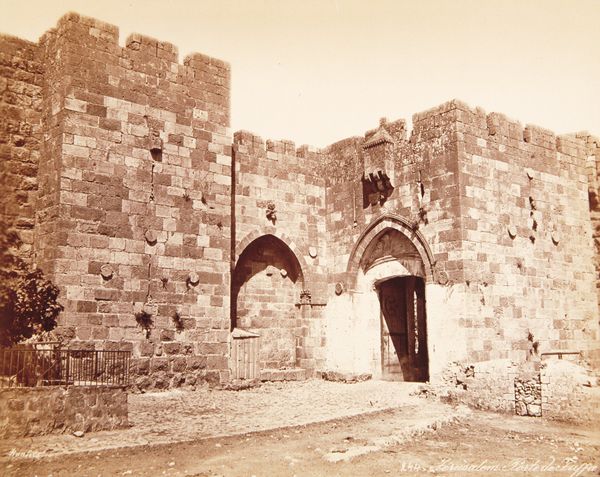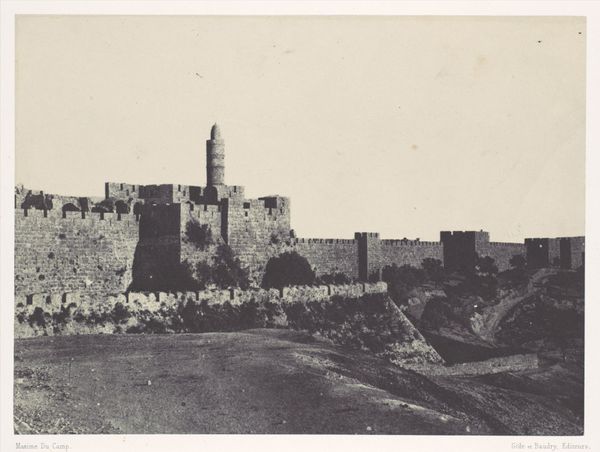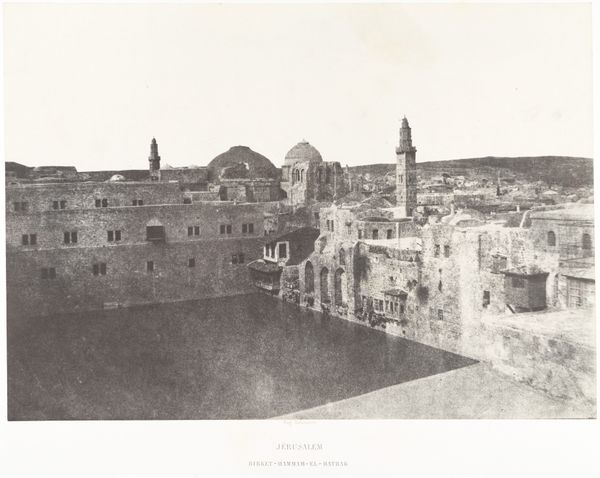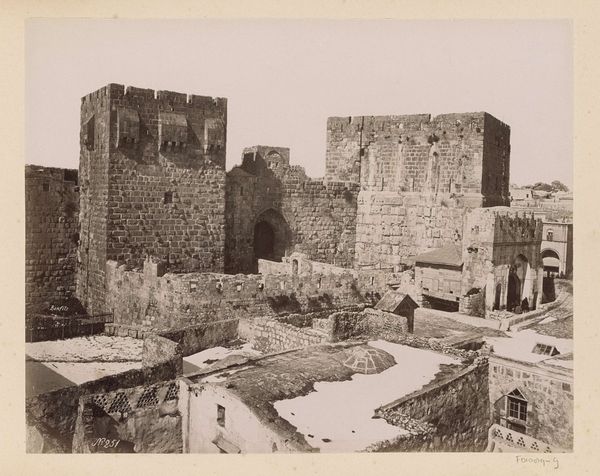
daguerreotype, photography, architecture
#
landscape
#
daguerreotype
#
outdoor photography
#
photography
#
ancient-mediterranean
#
arch
#
cityscape
#
islamic-art
#
architecture
Dimensions: Image: 23.4 x 32.9 cm (9 3/16 x 12 15/16 in.) Mount: 44.6 x 59.6 cm (17 9/16 x 23 7/16 in.)
Copyright: Public Domain
Editor: Here we have Auguste Salzmann's daguerreotype, "Jérusalem, Tour de David," taken between 1854 and 1859. The muted tones give the Tower of David such a stark, imposing presence. It's interesting to see such ancient architecture captured with this relatively new photographic process. What do you see in this piece? Curator: Well, first it's important to consider the context. Photography at this time was being used to document the world, especially places like Jerusalem, laden with religious and historical significance. This image contributes to a specific 19th-century fascination with the "Orient," but we should critically examine whose gaze is being privileged here, and what narrative this image reinforces or challenges. Consider also that the choice of what to photograph, the angle, and the lighting are all deliberate acts shaping how viewers perceive this place. Do you think this image presents an objective view of Jerusalem? Editor: Not entirely. The framing definitely emphasizes the monumentality and perhaps even the supposed decay of the ancient structure. It seems to romanticize the past. I’m curious about who was meant to see this image. Curator: Exactly. Salzmann intended to present these photographs as objective "proof" of Biblical narratives. The intended audience was primarily European intellectuals and religious figures eager to visualize the Holy Land. Furthermore, photographs like this were implicated in complex colonial power dynamics, serving as visual tools for understanding and, arguably, controlling distant lands. We must consider the ethical dimensions inherent in representing other cultures, especially through the lens of power. It's important to analyze the image not just for what it shows, but what it omits or subtly emphasizes to serve a particular agenda. Editor: I see how this seemingly simple image of a historic site is loaded with historical and cultural significance, shaping perspectives about a place and its people. It makes you question what other stories are behind the image that aren’t immediately available at face value. Curator: Precisely. Reflecting on images such as this reminds us that visual representation never occurs in a vacuum; they are always imbricated within webs of power, ideology, and historical contingency.
Comments
No comments
Be the first to comment and join the conversation on the ultimate creative platform.
